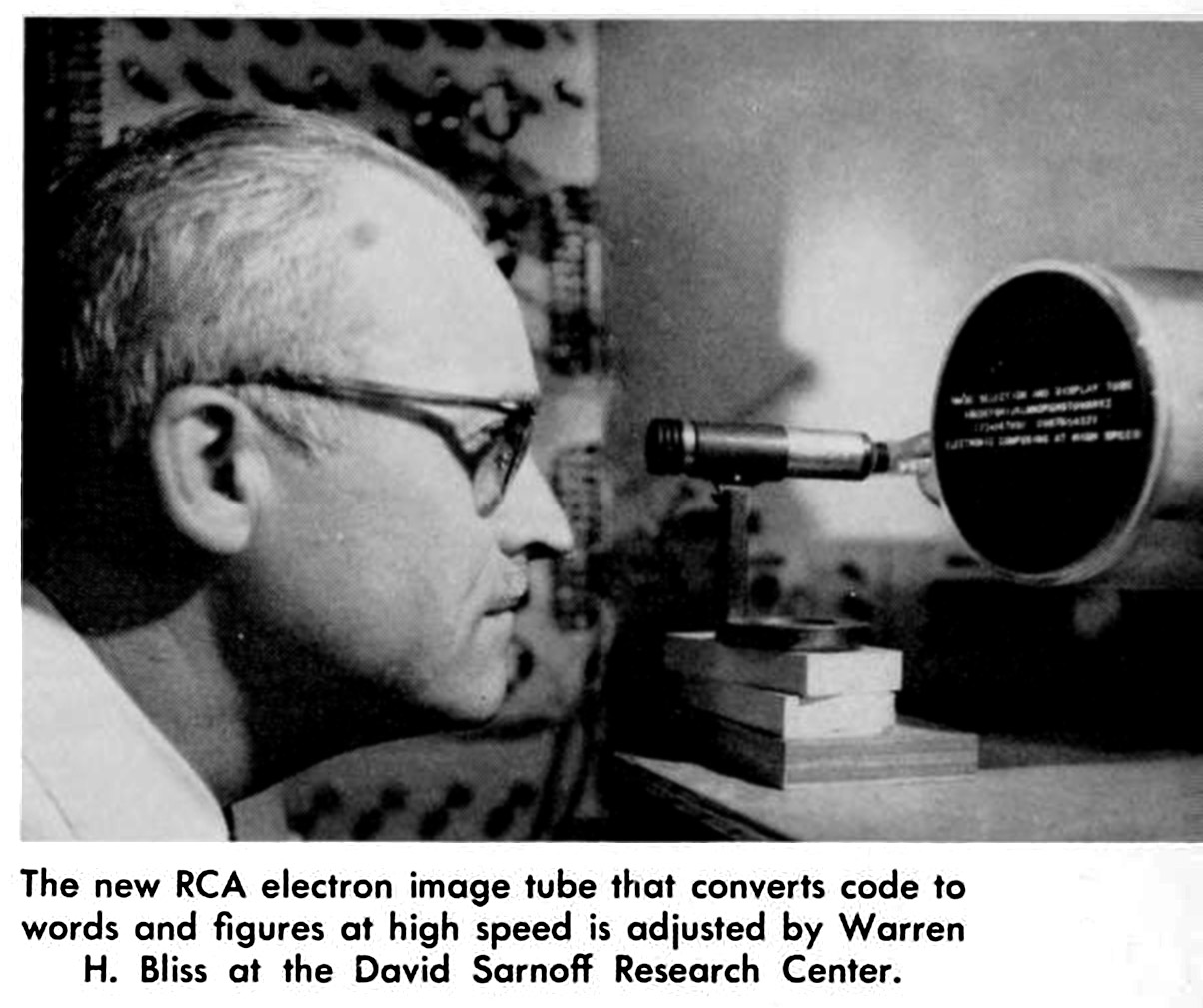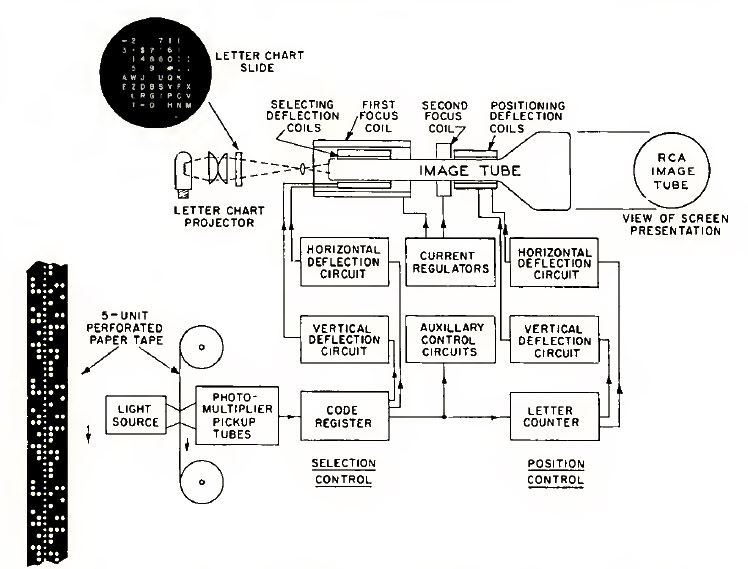
The RCA Selectron -- Optical Input Character Selection and Display Tubes
McNaney's Charactron, as did all subsequent improvements by SC and other firms, offered a limited selection of characters -- usually 64 or 128 -- from
a metal stencil sealed within the CRT envelope. While this was usually a sufficient number of
characters for a single application -- a SAGE AN/FSQ-7 console, for example -- a way to have a larger available selection of characters and fonts was desired. Putting more (and smaller) characters in a stencil both increased the complexity and precision required for the tube and its electronics as well as lowered the brightness of the displayed character on the screen.
Both RCA (which never produced a commercial shaped-beam display tube) and Stromberg Carlson developed
devices where the desired character repertoire was not built into the CRT but was optically projected into the CRT from the outside.
While both designs attempted to produce the same function each took a fundamentally different
approach at the optical input section. Each had its own flaws and difficulties.
Stromberg Carlson -- The Optical Input Charactron

The SC device was identical in function to the standard Charactron except that the thin metal foil character stencil was replaced with a photosensitive mesh mosaic. The electron beam bombarded the mosaic in the same way as if it was a stencil. The difference being that the portions of the mosaic that were illuminated by the external light pattern allowed the electron beam through the tube. The mesh was a photosensitive spatial modulator.
This was a structure easy to draw on a patent application -- features 18 through 30 -- but far more difficult to implement. Numerous photographic negatives, each illuminated by its own neon lamp, would project a character or icon onto the rear face of the modulator plate. The electron beam from the gun would flood the desired mosaic and be extruded through just as in the conventional Charactron.
An odd limitation presented by the '708 patent is that only a single character would be projected onto the mosaic at a time: The deflection plates, figure 16, did not select any sub-region of the mosaic. McNaney suggests only ten lamps and slides for numerals 0 through 9 in his embodiment. One might have anticipated projecting a complete set of characters onto the mosaic as if it were the full stencil of the conventional Charactron. Hindsight after the better part of a century does not reveal the mindset of the inventors and the patent attorneys in 1952...
<iframe>
Radio Corporation of America -- The Compositron
...but six months after the '608 patent RCA did file a patent for a device, developed by Warren Bliss, John Ruedy, and Paul Herkart, where the optical input to the basic stencil-beam device was a complete character set.
Charles J. Young, (son of General Electric Company chairman and RCA founder Owen D. Young) and George A. Morton projected a photographic slide onto a conventional photocathode structure -- like that of an image orthicon -- to produce an electron image replica of that slide. The full (electron) image was then magnetically steered so that only the desired character passed through an aperture and then accelerated and deflected onto the phosphor screen of the CRT.


And if this sounds familiar, it is essentially the same function as Philo Farnsworth's image dissector only the section of interest of the electron image passes through the aperture to the display section as opposed to an electron multiplier structure. Just as the electron image from a photocathode is coupled to a storage target to form the image orthicon, the photocathode now provides a simultaneous multiplicity of character cross-sectioned beams for selection, deflection, and display.
 RCA Radio Age, April 1955 article
RCA Radio Age, April 1955 article
 RCA Review, March 1955 article
RCA Review, March 1955 article
<iframe>